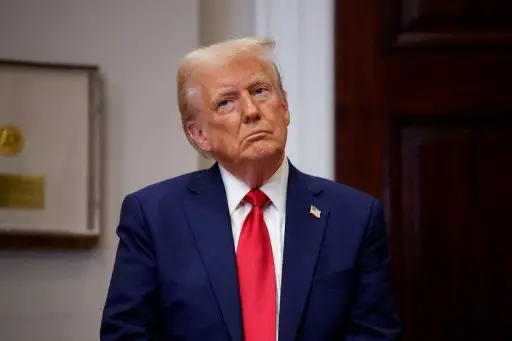WASHINGTON, United States – The streets of Washington, D.C., have long been a canvas for political statements, but a new shift in the city’s landscape is reigniting debate over the role of public art in shaping history.
On Monday, city crews began dismantling a high-profile street mural near the White House, a piece that had stood since 2020 as a powerful emblem of a turbulent era in American history. The removal has sparked conversations about political influence, urban renewal, and how cities choose to remember moments of national reckoning.
The mural, featuring the phrase “Black Lives Matter” in bold yellow letters, was painted amid widespread protests following the police killing of George Floyd. It became a focal point for activists and a symbol of Washington’s role in the national dialogue on racial justice. However, its removal comes at a time when debates over diversity, equity, and inclusion (DEI) policies are intensifying, with a changing political landscape influencing decisions at every level of government.
Shifting Priorities in the Capital
Mayor Muriel Bowser, who originally approved the mural, now finds herself balancing a delicate political equation. Washington, D.C., remains overwhelmingly Democratic, but recent shifts in federal leadership and Republican-led efforts to challenge the city’s autonomy have forced local leaders to reassess their priorities.
“We have to look forward,” Bowser said when asked about the decision. “There are many issues impacting our residents today, and our focus is on economic recovery and stability.”
Observers note that Washington’s status as a federal district makes it particularly vulnerable to political shifts. With Congress having significant oversight over the city’s budget and policies, decisions on local matters often carry broader national implications.
A Broader Debate Over Public Memory
The removal of the mural isn’t just a local issue—it ties into a larger debate over how cities commemorate historical movements. Across the country, public art installations, monuments, and street names have been contested as administrations change and societal priorities evolve.
For some, the mural’s removal is a sign that the city is moving on from the events of 2020. For others, it feels like an erasure of a significant chapter in American history.
“I came here to take one last picture,” said a D.C. resident watching the work crews. “It’s a reminder of what we went through. I don’t think this should be erased.”
Others argue that Washington’s public spaces should be adaptive, reflecting the needs and values of its residents as time moves forward. “Cities evolve,” said urban planning expert James Carter. “The challenge is finding a way to honor history while making room for the future.”
What Comes Next?
While the mural’s removal is seen by some as a concession to political pressure, city officials have not announced plans for a replacement. Some activists have called for a permanent memorial elsewhere in the city, while others fear this is part of a broader trend of scaling back public recognition of racial justice movements.
As Washington’s streets continue to change, the debate over what—and who—gets remembered remains as alive as ever.

